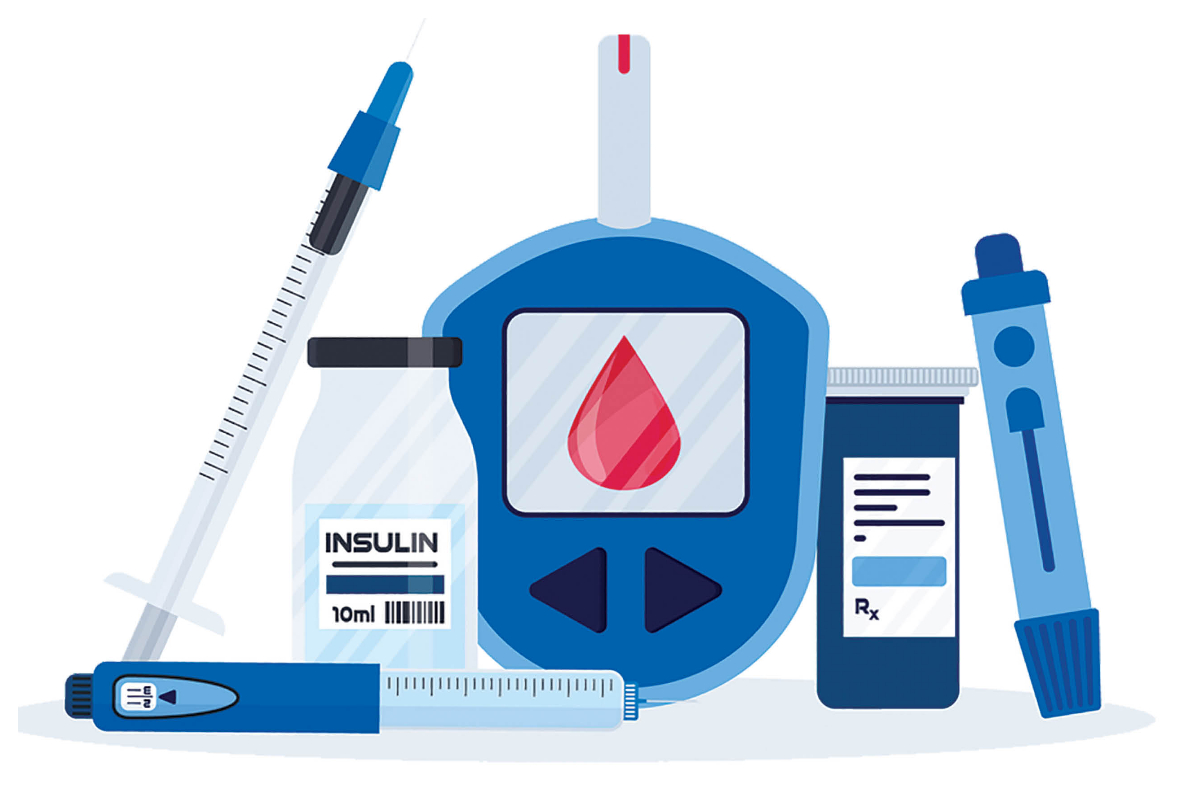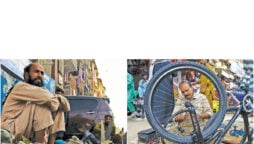
Fears of insulin shortage loom large
Black marketing pushes diabetes patients into danger zone
Karachi: Diabetes patients in the city are suffering at the hands of black marketers following an unexpected increase in the price of insulin. A visit to the pharmacies shows that insulin is sold for Rs1,142 instead of 980 rupees. The Humulin 70/30 100IU injection is quite conveniently out of stock and sold for Rs1,800 in the black market.
People buying medicine at medical stores have expressed their concerns over the skyrocketing prices going beyond their reach.
A man whose mother was diagnosed with diabetes ten years ago said, “The price of insulin has increased four times in the last few years. One pen costs me 1,430 rupees and my mother requires 9 to10 pens a month which comes to around Rs14,000. This does not include oral medicine.”
Wholesale Chemist Council of Pakistan president Muhammad Atif Hanif Blue says that hoarding for black marketing results in a hike in the price of medicine. He also admits that the price of medicine in the last few months has increased by 15 to 20 per cent but it has been doubled and tripled by the black marketers making the situation worse.
Atif also raises concern over the increase in locally-produced drugs and argues that medicines are getting short because some pharmaceutical companies have stopped production due to the high rate of the dollar and expensive raw materials.
He fears that it might cause the local producers to stop manufacturing and then there will be no other way but to rely on imports. The government must play its role to cut expenses on raw materials to avoid the looming crisis, he said.
According to the World Health Organisation (WHO), diabetes was the biggest cause of mortality in 2019, claiming approximately 1.5 million lives. Since the prevalence is greater in low and middle-income countries, Pakistan is more vulnerable to diabetes-related deaths.
A recent report from the International Diabetic Federation (IDF) ranking the world’s top countries for the number of adults (20–79 years) with diabetes in 2021 has put Pakistan in third place with a total of 33 million, after China and India. The IDF ranked Pakistan in first place for having the highest comparative diabetes prevalence rate in 2021 at 30.8 per cent.
According to Dr Rana Jawad Asghar, Chief Executive Officer of Global Health Strategies and Implementers, the scarcity of healthcare services in the country, especially in rural areas, is a matter of concern, probably because of the unfair allocation of funds for the healthcare sector.
Pakistan currently spends just three per cent of its GDP on healthcare, well below the WHO recommendation of at least 6 per cent. Over the past few years, it has received an increase in budgetary allotments, not enough to cope with rising inflation and population growth.
Additionally, three-fifths of budgetary allocations were consumed by non-development purposes such as salaries, thus leaving a meagre share to deliver efficient, equitable and quality service.
In Pakistan alone, about 0.2 million people become disabled every year due to diabetes. Not only this, but diabetes is also the eighth leading cause of death in Pakistan and the number of people affected by it has increased by 50 per cent since 2005. Despite these risks, a large percentage of people with diabetes are unaware that changes in daily routines can improve many conditions.
Dr Rana believes that education has always proven to be a powerful tool. While it may not be able to provide treatment to diabetics, it most certainly can spread awareness among the masses regarding its management and prevention. He said that efforts need to be carried out, especially involving TV and media, to reach a larger audience. A sedentary lifestyle must be condemned by making people reminded of the significance of incorporating exercise and dietary changes into their daily routines to fight diabetes.
Dr Farah Mehmood, a Dietician highlighting the importance of the dietary plan to curb diabetes says that we need to know that diabetes itself is not a disease but a condition which exhilarates other diseases. It occurs when the body is unable to dissolve sugar (glucose) in the blood and can cause complications such as heart attacks, strokes, blindness, kidney failure, and amputations of feet and legs. Dr Farah recommends that maintaining a healthy weight, being physically active, and eating a nutritious diet can help prevent the majority of cases of type 2 diabetes. People with prediabetes should target to lose at least 7 per cent to 10 per cent of their body weight to prevent disease progression.
“Prediabetes and type2 diabetes are largely preventable, making lifestyle changes. The key to prevention can be boiled down to five words: Stay lean and stay active.” she reiterated.
Catch all the Urban Insight News, Breaking News Event and Latest News Updates on The BOL News
Download The BOL News App to get the Daily News Update & Live News.












 Read the complete story text.
Read the complete story text. Listen to audio of the story.
Listen to audio of the story.